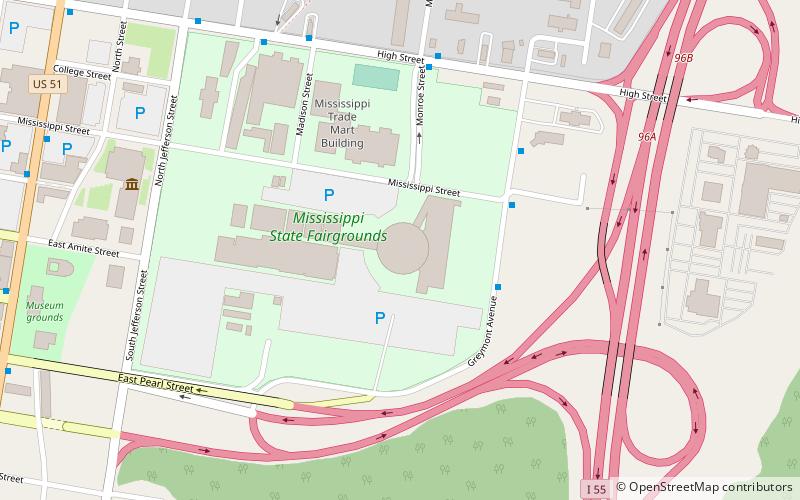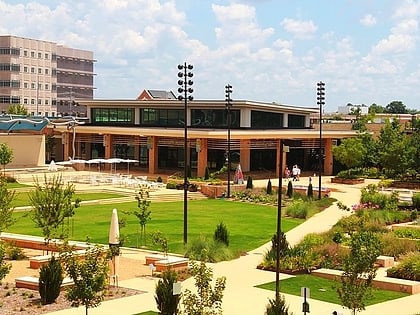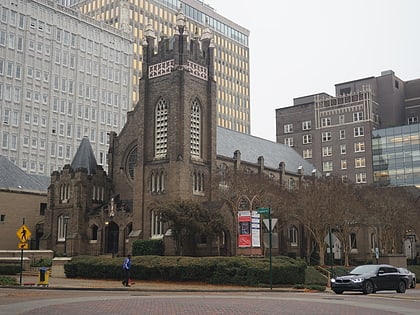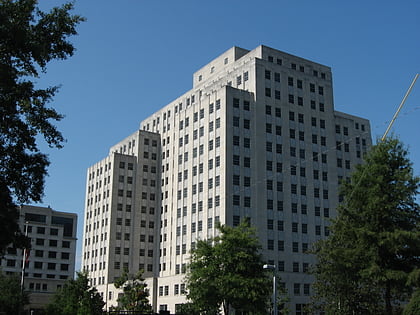Jackson Volcano, Jackson

Facts and practical information
Jackson Volcano is an extinct volcano 2,900 feet beneath the city of Jackson, Mississippi, under the Mississippi Coliseum. The uplifted terrain around the volcano forms the Jackson Dome, an area of dense rock clearly noticeable in local gravity measurements. E.W. Hilgard published his theory of an anticline beneath Jackson in 1860 due to his observations of surface strata. The dome contains relatively pure carbon dioxide which is used in oil production in Gulf Coast oil fields. The noble gas data suggests mantle origins with a date of 70 million years for the Jackson Dome intrusion. Geologists have evidence of repeated uplifts accompanied by dike intrusions and volcanic extrusions, erosion, and sedimentation with one coral reef having developed during a submergence. Much of the oil at the crest of the dome volatilized during a late uplift, but oil production wells numbered over a hundred in 1934. ()
Jackson
Jackson Volcano – popular in the area (distance from the attraction)
Nearby attractions include: Old Capitol Museum, Mississippi Museum of Art, Mississippi Governor's Mansion, St. Andrew's Cathedral.
Frequently Asked Questions (FAQ)
Which popular attractions are close to Jackson Volcano?
How to get to Jackson Volcano by public transport?
Bus
- Greymont St. @ Regency Hotel • Lines: 4R (4 min walk)
- High St. @ Taco Bell • Lines: 4B (6 min walk)
Train
- Jackson (29 min walk)










